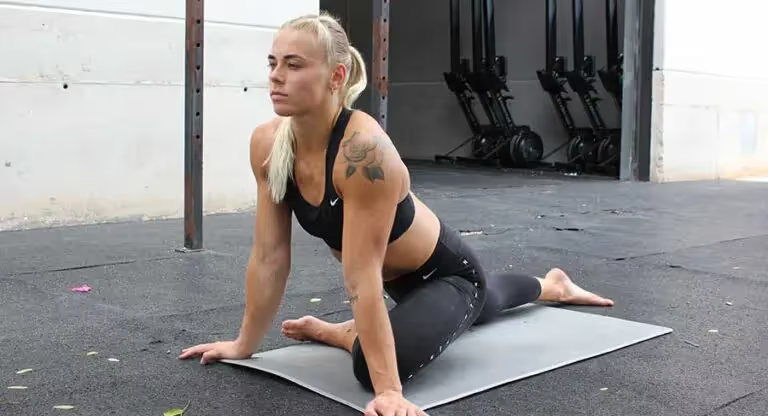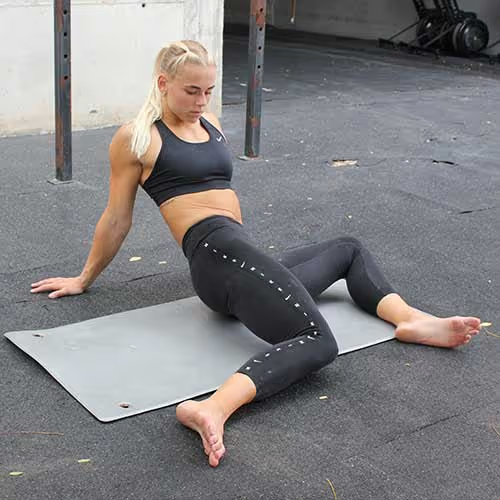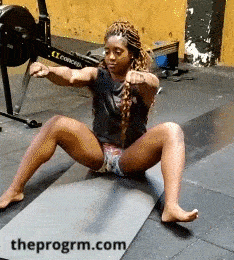3 Exercises to Improve Hip Mobility
Tight hips are often expressed as lower back pain and result in serious injury. Here's the best 3 exercises you need to be doing.



Tight hips are often expressed as lower back pain and result in serious injury. Here's the best 3 exercises you need to be doing.


Hips are the key to the explosiveness in your kip, the load bearers in your lifts, and the antagonist to your core (and let’s not forget that CrossFit is a core-to-extremity sport!)
Hips also just happen to be a good indicator of longevity as we approach old age.
This is why it’s so important that your hips are strong and mobile now so that we can make sure that they stay that way as we get older!
Here are three exercises that you can do regularly, boost your hip health.
The hip is one of the more complicated joints in your body; it consists of bones, tendons, cartilage, and ligaments that shorten and lengthen the surrounding muscles allowing you to run, jump, and squat.
The role of the hip is to support the pelvis and core in order to form a strong base for the legs and arms to move from.
Holding poor positions for long periods of time, shortens and weakens hips, which makes it suboptimal for engaging in exercise.
Tight hips are often expressed as lower back pain and result in serious injury.
To decrease this risk, and to be able to continue to move independently, it's important to make sure that your hips can stabilize your core and move with fluidity, especially as we age.
A flexible hip is a happy hip and so our first mobility drill will be a static stretch commonly known as pigeon stretch. Performing the stretch correctly opens the hip joint by stretching your thighs, lower back, and glutes, while simultaneously lengthening the hip flexors and groin.
These areas take the brunt of the heavy lifting that we do in CrossFit, which is why it’s crucial that they function properly.
How to do it:

Work up to 2-3 sets of 60 seconds each side. Breathe deeply and relax into the stretch.
This next drill is for improving movement of the hip joint within its capsule.

Doing this helps to strengthen internal and external rotation while your hips are in flexion and extension, which are particularly essential functions for squatting lunging.
How to do it:

Work up to 3 sets of 5 reps each side.

Variation adding hip flexion
Hip CARs or Controlled Articular Rotations help to develop your motor control, especially approaching your hips’ end range of motion.

Being able to move with control through a sufficient range of motion reduces your risk for injury by making it more likely that you won’t overload or compensate with other parts of your body.
This exercise is great for exposing weaknesses and seeing improvement as you continue to work on your hip mobility and stability, so I highly recommend that you record yourself doing it every once in a while.
How to do it:

Perform the movement slowly and controlled. Video is speed up for size purposes.
Complete 3 sets of 5 reps in each direction on each leg. As seen previously, this drill can also be performed from a standing position.
[adinserter block="2"][adinserter block="4"]
Conclusion
Having strong and healthy hips goes beyond being able to squat or deadlift more weight (though it doesn’t hurt!).
Your hips connect your legs to your core, making them a key source of power and stability while training and when engaging in day to day activities like walking, running, and climbing stairs.
Strong, balanced hips can improve overall posture, and prevent common injuries related to the back and lower body.
If your low back, knees, or hamstrings often feel restricted or tight, take it as a sign from your body that your mobility and flexibility are lacking.
As we all know, hips don’t lie.